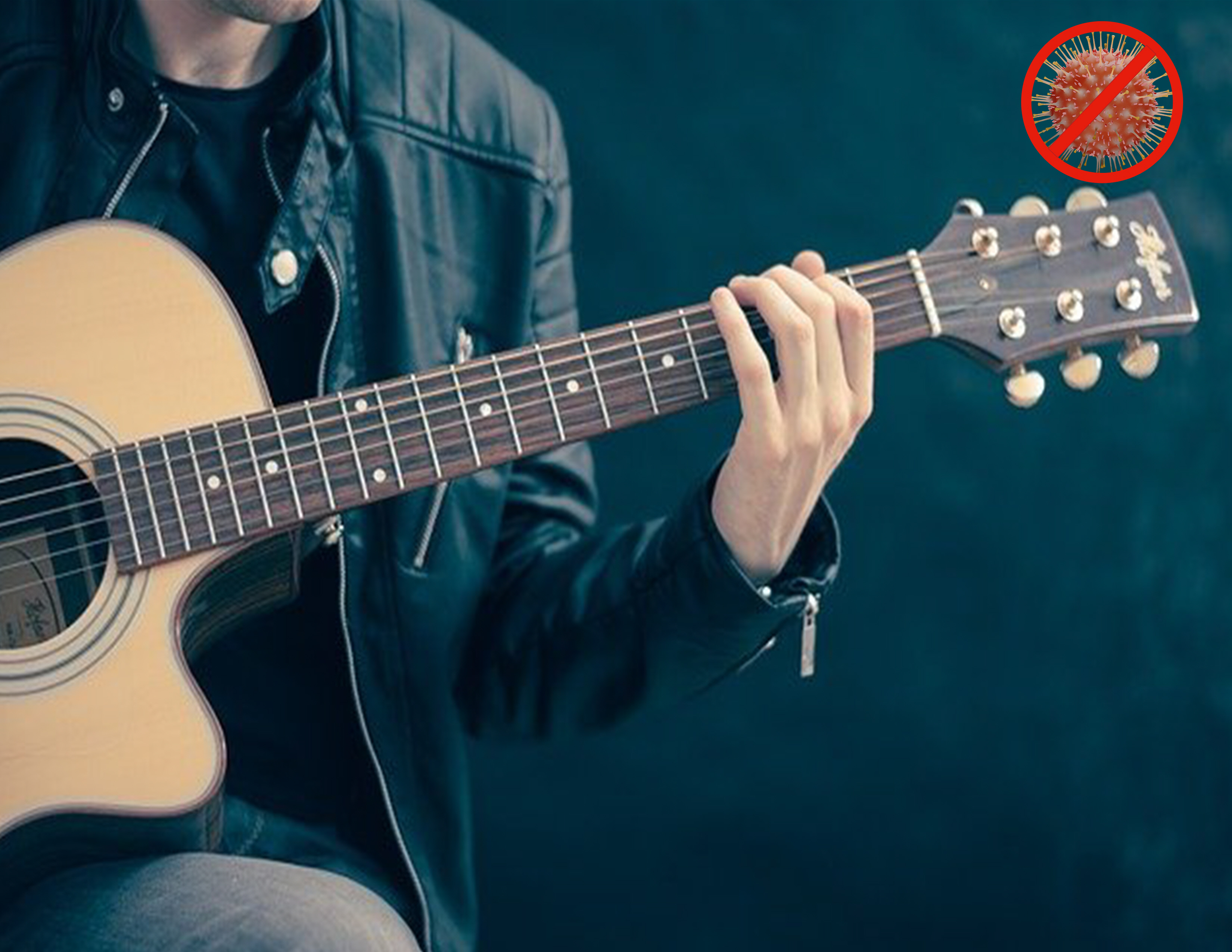 Submitted by Zeke Speak on
Submitted by Zeke Speak on

Derivative Images
A Neurologic Music therapy, a facilitated song-writing tool of Psychosocial Training and Counselling (MPC) technique was developed as a cost-effective and accessible intervention for older adults experiencing symptoms of distress and anxiety due to the COVID-19 pandemic.
Fifteen older adults, who had been experiencing major or minor symptoms of generalised anxiety disorders due to Covid-19 pandemic situation, were assigned 10 virtual weekly sessions of Music therapy, including:
1) A virtual home-based therapy session conducted by a music therapist
2) A self-guided programme where participants applied some interventions of passive music therapy by listening to songs and through watching videos of a music therapist for improvisation
3) Song-writing and music-making to express hidden emotions in five weekly sessions of a virtual group setting with the help of a music therapist.
Skill/area targeted: expression of emotions
Age-group: older adults (65-90 years)
Setting: Group of 15 seniors in virtual session
Music therapy technique: Music in Psychosocial Training and Counselling (MPC)
Equipment: A large sheet of paper on which to write song words and accompanying instruments (harmonium, electronic tabla)
Participants, after the10th weekly session of virtual music therapy session, behaved significantly better in their self-esteem and moods. These improvements are clinically significant and the potential for this type of musical intervention with home bound elders and others who have limited access to services during pandemic condition is discussed.
Music therapy is the clinical and evidence-based use of music interventions to accomplish individualised goals within a therapeutic relationship by a credentialed professional who has completed an approved music therapy programme (1).
Music therapy is an established health profession in which music is used within a therapeutic relationship to address the physical, emotional, cognitive, and social needs of individuals. After assessing the strengths and needs of each client, the qualified music therapist provides the indicated treatment, including creating, singing, moving to, and/or listening to music. The target population of Music therapy varies from older adults to children. The Music therapy techniques are used to improve the non-musical behaviour of the client, including speech and communication skills, motor skills, cognition, social and emotional skills. The target population varies from children to older adults depending on specific functional disorders. Some of the functional disorders are as follows:- Dementia, Alzheimer’s, Parkinson’s disease, Neurologically injured brain, Traumatic Brain Injury (TBI), Mental Disorders, Autism Spectrum disorder (ASD), Attention Deficit Hyperactivity disorder (ADHD), Attention Deficit disorder (ADD), Development apraxia of speech, Cerebral palsy and Intellectual disabilities, including Down syndrome, Fragile X syndrome, and Williams syndrome.
The role of music in therapy has undergone some dramatic shifts since the early 1990s, driven by new insights from research into music and brain function. In particular the advent of modern research techniques in cognitive neuroscience, such as brain imaging and brain-wave recordings, has enabled us to study the higher cognitive brain functions in vivo of humans. A highly complex picture of brain-processes involved in the creation and perception of music has emerged. Brain research involving music has shown that music has a distinct influence on the brain by stimulating physiologically complex cognitive, affective and sensor motor processes. Furthermore, biomedical researchers have found that music is not only a highly structured auditory language involving complex perception, cognition, and motor-control in the brain, but also that this sensory language can effectively be used to retrain and re-educate the injured brain (2).
Translational biomedical research in music has led to the development of ‘clusters’ of scientific evidence that show the effectiveness of specific music interventions. In the late 1990s, researchers and clinicians in music therapy, neurology, and brain sciences began to classify these evidence clusters into a system of therapeutic techniques that are now known as Neurologic Music Therapy (NMT) (3).
Music in psycho-social training and counselling (MPC) techniques is using improvisation experiences. Within the context of MPC interventions, the music is utilised to assist mood- stabilisation, expression of emotion, clarity of thought and appropriate social functioning. Limb and Braun described patterns of neural activity involved in improvisation that differed from those involved in the performance of over-learned music. Using functional magnetic resonance imaging (MRI), they found a significant dissociated pattern of activity whereby improvisation resulted in the activation of the medial prefrontal cortex and deactivation of the dorso-lateral prefrontal and lateral orbital cortices. Referring to behavioural output, Limb described the process as an activation of brain regions thought to be involved in self-expression, including the generation of autobiographical information and deactivation of areas involved in self-monitoring or inhibition (4).
Song-writing tools in MPC technique have specific potentials for providing important emotional experiences. Emotional involvement is inevitably part of any musical interaction, but in the process of songwriting this is explicated within the song product.
Case Study
Song-writing in a virtual setting for a group of 15 seniors, aged 65 - 90 years during the Covid-19 pandemic in California, USA.
It has been a 2-month long process including 10 sessions to complete the song-writing, music making and improvisation with a group of 15 seniors between 65-90 years of age in a virtual setting of Music therapy. All are Indian Americans living in a retirement community in California, USA. Most of them are comfortable in Hindi and they have chosen ‘Hindi’ to express their emotions. After brainstorming ideas related to Covid-19 pandemic, two words ‘Ghar’ (Home) and ‘Parivaar’ (Family) were favourite during the session. Each participant had created one meaningful sentence like ‘Ghar Hai to Khushiyaan Hain’ (True happiness lies within the home), ‘Main Ghar Mein Sukhi hoon Corona Aapkebina’(I am happy in my house “Corona”, without you) and ‘Chota Parivaar Sukhi Parivaar’(A small family is a happy family). At the end of the 2nd session, they were able to write down 12 sentences to make the poem. Out of the 12 sentences, three had negative emotions. For example, ‘Main Ghar Mein Akeli Hoon’ (I am alone in my home). An 87-year-old lady with a cardiac problem, staying alone in a retirement community, had written that sentence. So the rest of the group members had discarded any negative feeling and made it to read, ‘Main Akeli Nahi Hoon’ (I am not alone). And finally we have made an outline of the main theme.
At the end of the fourth session they were able to write down the whole lyrics of the song with a positive flow of emotions.
Vasudhaiva Kutumbakam (the whole world is my family)
Oh my beautiful Home,
Children are playing around.
And yes, we are very happy in our house “CORONA” without You.
Oh my beautiful Home,
All our happiness lies within You.
In the whole world no one is happy without a family.
I have a small and happy family.
Oh my beautiful home.
Nowadays our home is ‘Priya living’
And Yes we are not alone, we are living together and the whole world is my family. ‘Vasudhaiva Kutumbakam’’
The Hindi version of the poem:
Ghar Ati Sunder Hai,
Ghar Mein Bachche Khel Rahe Hain.
Main Ghar Mein Sukhi Hoon Corona Aapke Bina.
Ghar Ati Sunder Hai.
Ghar Hai To Khushiyaan Hain Parivaar Bina Koi Sukhi Nahin.
MeraChotaParivaarSukhi Parivaar.
GharAti Sunder Hai (repeat)
MeraParivaar Priya Living Hai.
Hum Wapas Mil Gaye Hain Ab Main Akeli Nahin Aaj Pura Vishwamera Parivar Hai.
Song-writing in therapy consists of a process of creating the song and all the musical, verbal and bodily communication involved in that process. The therapeutic process concerned with song-writing does not end when the song is completed.The process evolves further once the product is achieved.The therapeutic process with the product continues as the song is rehearsed with the different instruments, as the song is sung repeatedly in therapy, as the song is performed for other therapists,family or friends or sometimes even performed in concerts (5,6).
The meaning of a song, and the therapeutic potentials of songwriting in music therapy then, is not only connected to the song as the certain expression, but to the relational experiences of the song-writing process and to the use of the song inside and outside of the music therapy room.
The author Aradhana Deogharia, is a neurological music therapist and the Founder and President of NAVYA Foundation, USA.
References
1. American Music Therapy Association [Online] Available from: https://www.musictherapy.org/ [Accessed 27th May 020].
2. Thaut MH, Mcintosh GC, Hoemberg V. Handbook of Neurologic Music Therapy, Oxford, UK: Oxford University Press; 2014, pp. 1-2
3. Ibid.
4. Limb CJ, Braun, AR. [Online] Neural substrates of spontaneous musical performance: an fMRI study of Jazz improvisation, 2008. Available from: https://journals.plos.org/plosone/article?id=10.1371/journal.pone.0001679 [Accessed 29th May 2020].
5. Aasgaard T. ‘Song creations by children with cancer: process and meaning’, Institute for Music and Music Therapy, Aalborg University; 2002.
6. Aigen K. Conversations on creating community: performance as music therapy in New York City Community Music Therapy. London: Jessica Kingsley Publishers; 2004.
Suggested reading
1. Anshel A, Kipper DA. The influence of group singing on trust and cooperation. Journal of Music Therapy 1988: 25: 145-55.
2. Baker, F, Tamplin J. Music Therapy Methods in Neuro rehabilitation: a clinician’s manual. London: Jessica Kingsley Publishers; 2006.
3. Baker, F Wigram AL (eds). Song-writing: Methods, echniques and clinical applications for music therapy clinicians, educators and students. London: Jessica Kingsley Publishers; 2005.
4. Baumgartner T, Esslen M, Jancke L. From emotion perception to emotion experience:emotions evoked by pictures and classical music. International Journal of Psychophysiology 2006; 60: 34-43.
5. Gabrielsson A, Juslin PN. Emotional expression in music performance: between the performer’s intention and the listener’s experience. Psychology of Music 1996; 24: 68-91.
6. Gardstrom S. Practical techniques for the development of complementary skills in musical improvisation. Music Therapy Perspectives 2001; 1: 82-87.
7. Goldberg FS. Images of emotion: the role of emotion in guided imagery and music. Journal of the Association for Music and Imagery 1992; 1: 5-17.
8. Hanser S.B,Thompson LW. Effect of a music therapy strategy on depressed older adults. Journal of Gerontology 1994; 49: 265-69.
9. Sharma M. Handbook of Music Therapy and Special Education. Delhi: APH Publishing Corp. 2009, pp. 117-40.
- 822 reads